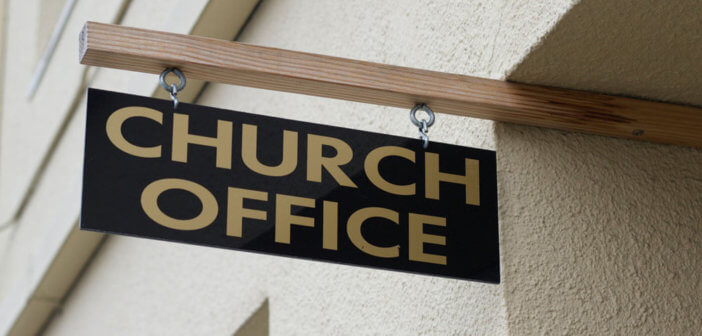Ann Michel of the Lewis Center staff outlines six questions that can help reveal whether a particular staff role is likely to be fruitful or burdensome and counterproductive.
Over the past several decades, the trend in many churches has been to add staff with more laity in paid positions. In many circumstances, the addition of staff promotes more vital and effective ministry. But churches can easily find themselves burdened with too much staff if they fail to consider some key factors that determine whether a staff position will be fruitful or counterproductive.
1. Can a volunteer reasonably do the job?
The ultimate standard of when a church needs to add staff is when a necessary function has grown too large or requires too much specialized expertise for a volunteer to handle. In a small congregation, it may be perfectly reasonable for a volunteer to handle bookkeeping, childcare, certain maintenance tasks, or other responsibilities. In larger congregations or more specialized areas of ministry, it may be less reasonable to expect that volunteers can handle such critical functions. The key question becomes, “Is this job too large or too important to reasonably expect that a volunteer can be responsible for it?”
2. Are goals and outcomes clearly understood?
Many churches hire staff without a clear vision of what the person will actually do, desperately hoping that adding staff will turn around a struggling area of ministry. Vaguely defined job responsibilities can create any number of problems, not the least of which is a possible lack of productivity. Even if there are pressing ministry needs to be addressed, a church with unfocused or unproductive staff members is overstaffed unless and until goals and outcomes are clearly defined.
3. Does the level of staffing contribute to the activity trap?
Churches caught up in the “activity trap” often feel they must add staff simply to keep up with everything that’s going on. The tragic flaw in this logic is that more staff can actually make the situation worse by generating even more activities that compete for people’s time and attention. Unless the church is growing numerically and connecting with new people, the ironic consequence of having too much staff can be increased levels of burnout and the proliferation of marginal programs that struggle to attract adequate levels of leadership and participation.
This risk is most acute in declining membership churches trying to maintain a level of programming that no longer fits their current attendance. Although it is painfully difficult, churches in this situation need to ask whether right-sizing their ministry footprint and doing fewer things well is more appropriate than adding more staff.
4. Are staff spending too much time with one another?
Another symptom of an overstaffed church is when staff end up spending more and more time coordinating with one another and less and less time interfacing with church or community members. Many churches add staff without realizing that they may need to adjust some of their ways of doing things. For example, as a staff grows larger, it may no longer make sense for everyone to report directly to the senior pastor, to participate in a single staff meeting, or to be present at every church event. Clear reporting relationships and efficient lines of communication are needed to avoid the trap of a staff being too inwardly focused on itself.
5. Does the staff build capacity and engage new people?
It’s also important to ask whether the staff is doing things “for” the members of the church or “with” the members of the church. If the role of staff is seen as serving existing members or doing things on their behalf, it can reinforce passivity and inactivity on the part of church members. Ideally, staff should put their focus on engaging and equipping others, especially reaching new people and cultivating other leaders.
6. Are staff salaries crowding out other budgetary needs?
There is no single standard for what percentage of a church’s budget should be devoted to staffing. But churches with too much staff will often scrimp in other areas to avoid painful layoffs. Taken to its extreme, this can create a situation where a church is continuing to pay staff who can no longer do their jobs well because other resources have been cut to the bone. A church that is constantly deferring necessary building maintenance, failing to pay its apportionments, or enduring constant program cuts should ask if it is spending too much on staff.
All churches need to use their staffs as effectively and efficiently as possible to be most fruitful in ministry.
Related Resources
- When Churches Hire Members by Ann A. Michel
- 7 Ways to Invest in Your Staff Culture by Phill Martin
- Synergy: A Leadership Guide for Church Staff and Volunteers by Ann A. Michel







